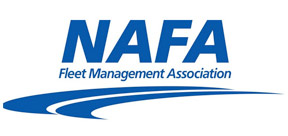New tower helps Jefferson City prepare for all fire emergencies

Running headlong into a burning building is not something a person can do haphazardly. It takes training, training and more training for a firefighter to have the skills and composure to face situations that require quick response time.
Training under real-world conditions is crucial to shave seconds that could mean the difference between life and death, both for the person in distress as well as for the firefighter. To prepare their first responders, the Jefferson City, Mo., Fire Department recently christened a new fire-training facility.
Ryan Back is a 14-year veteran of the JCFD and was promoted from captain to division chief of training in February. He spoke about how the new facility replaced an old training tower that had been built in 1993 and decommissioned 10 years ago.
“It served the department well, but it was time for an update, an increase in capabilities. The new structure is designed to accommodate more complex training scenarios and some of our evolving fire service needs,” he said.
At a height of 53 feet, 15 feet taller than the previous tower, with two additional floors and multiple entrances and exits, the JCFD can utilize the tower for training on its two aerial trucks in case of high-rise fires. Additionally, it boasts two class-A and one class-B burn rooms.

The burn rooms are engineered spaces designed with fireproofing panels to contain live-fire drills. Class-A burn rooms house material-fed fires from fescue, pallets, etc., while class-B ones are propane-fed and can be reset much more quickly.
The rooms have built-in safety features like sprinklers, ventilation systems and pyrometers to shut down a scenario if the blaze reaches a certain temperature. They are also NFPA 1403 compliant. All of the rooms’ features allow for numerous training scenarios, including rope rescues.
The different aspects of training are important because, as Back stated, “Repetition is the key to learning new skills.”
More than that, though, he said, “No structure that we go in and perform emergency services is the same. So it’s important for us to have the ability to change our scenarios, modify entrances, give different points of view and just prepare our guys better for different situations they may encounter during emergencies.”
The project began before Back became division chief and was a two-year process with a cost of $1.79 million. Originally, the city looked to repair the faulty tower, but with a reconstruction cost of over $1 million, leadership decided to simply look at rebuilding.
Funding came from both city and county resources. Part of it also came from American Rescue Plan Act funds remaining from the COVID-19 pandemic.
The training tower officially opened last October and has already hosted a department-wide live burn training session – three days, with six or seven evolutions per day. Since then, the burn building has been utilized every day by individual companies. Local fire departments and law enforcement personnel can reserve the tower through a calendar system.
Back commented on the atmosphere in the department regarding the facility.
“After the first training, there was a lot of positivity; they were happy to get back into it. They’re hungry for more training, more realistic scenarios.”
Jefferson City is home to five fire stations, seven frontline companies and 75 personnel. All the men and women who put their lives on the line must be prepared daily for any crisis situation that may come up.
In the time between the decommissioning of the previous tower and the opening of the new one, the department had to improvise training practices with Conex containers and simulated fires. The new tower gives a more accurate representation of what firefighters may face.
“We want to give them the most realistic training to adequately prepare them for situations they may encounter on the street,” Back said.
The fire tower doesn’t only impact the Jefferson City Fire Department. Back calls it a “regional asset” to the surrounding communities as well, providing access to training that county departments could not afford on their own. “We’re proud to offer that.”
With a population of around 44,000 and a daily working population around 100,000, Missouri’s capital city fields roughly 5,000 emergency calls each year. Most of these are EMS-based, Back stated, but when fires break out in the city, his department must be ready to answer the call.
“The time to test our skills is not at that moment. We want to test our skills on the training ground. To know what level we’re at mentally, for our guys, is a big victory,” Back said.
Next Article: Haltom City reclaims North Park for the local community



